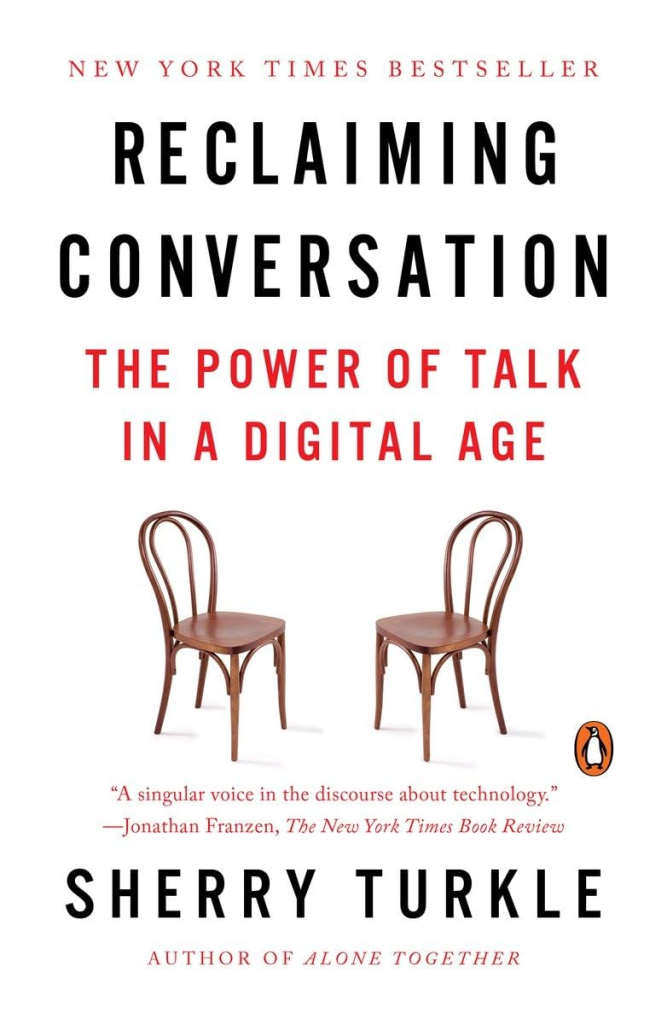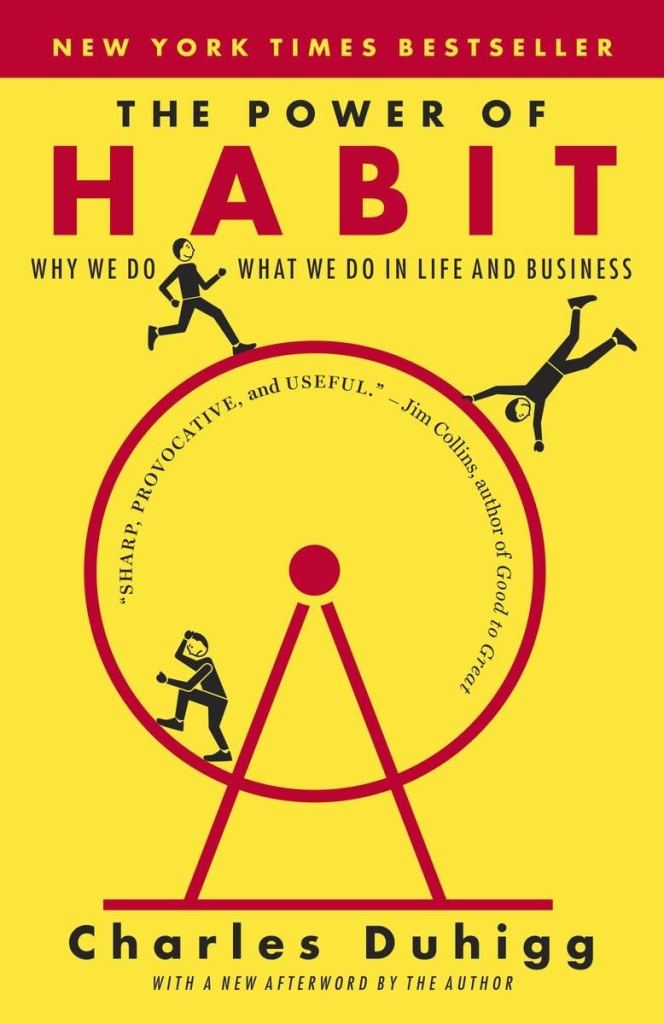Facing trust issues in your relationship? Discover proven ways to rebuild it fast. Learn effective communication and emotional intimacy strategies today.
Trust breaks in seconds. Rebuilding it takes careful, deliberate work. In 2025, a study by the American Psychological Association showed that 67% of couples who faced major trust issues ended their relationships within a year. But here’s what’s interesting: the 33% who stayed together reported stronger bonds than before the breach.
I’ve spent years as a relationship counselor, watching hundreds of couples fight through their darkest moments. Some succeeded. Others failed. The difference wasn’t luck or timing – it was their approach to rebuilding trust.
Think about your current situation. You’re reading this because something happened. A betrayal. A lie. Or maybe just a series of small disappointments that grew into something bigger. The pain is real. The uncertainty is overwhelming. But you’re here because you want to fix it.
Here’s what most relationship advice gets wrong: they tell you time heals all wounds. That’s not true. Time alone doesn’t heal anything. It’s what you do with that time that matters.
In this complete guide:
- We’ll examine proven strategies that actually work. These aren’t theoretical concepts – they’re practical steps tested by real couples who successfully rebuilt their relationships.
- You’ll learn specific communication techniques, forgiveness strategies, and ways to create new, stronger bonds.
The path ahead isn’t easy. But if you’re willing to put in the work, the relationship you build can be stronger than the one you had before. Let’s start with the most crucial element: understanding what effective trust rebuilding really looks like.
Step 1: Effective Communication Strategies

- Trust can be rebuilt with clear, honest communication.
- Focus on listening and understanding each other.
- Regular check-ins keep the conversation open and ongoing.
Establish Open Lines of Communication
Build a platform where conversation flows naturally. Start by encouraging honest dialogue without judgment. People need to feel safe sharing their thoughts. So, when trust is broken, removing judgment is crucial. Talk about expectations, boundaries, and experiences openly.
Allow room for emotions, misunderstandings, and disagreements. The goal is to create a space where anything can be discussed, even the tough topics. Remember, 40% of employees think their workplace lacks communication and teamwork, a reminder of how widespread communication issues are.
Active listening plays a big role in understanding during these conversations. It supports open dialogue. Let them speak, and show you are engaged. This could mean nodding, maintaining eye contact, or even using verbal acknowledgments. Stephen R. Covey highlights that listening should aim to understand, not just to respond. This principle applies in relationships too.
Practice Active Listening
Active listening involves being fully present. When the other person talks, focus on them. Remove distractions, like phones or TV. Reflect back what you hear. As an example, say, “What I’m hearing is…” This gives them a chance to clarify any misunderstanding. Understand that nonverbal cues make up a large portion of communication. Only 7% is in the words we use.
🪄 Empirical evidence shows that teams practicing active listening are 60% more effective in conflict resolution, underscoring its importance in rebuilding trust.
It’s not just about hearing; it is about truly understanding. Many people listen to reply, not to understand. Breaking this habit can open new paths to trust. Listening fully shows you value their opinions. Also, remember that clear, consistent communication fosters trust with 80% effectiveness.
Regular Check-ins
Regular check-ins can keep communication healthy. Plan specific times to discuss feelings and concerns. Let these talks be a mirror to your daily interactions. Create an agenda if needed, and stick to it. These discussions should be treated as tests of trust: not to challenge but to confirm it. Aim to resolve minor issues before they become bigger problems.
Minor miscommunications can snowball, so address theme early. Regular sessions can improve clarity, reduce misunderstandings, and sustain ongoing dialogues. Such check-ins not only reaffirm commitment to each other but also pave the way for genuine reconciliation. A study shows that 85% of employees are motivated by regular updates, and this concept can translate to personal relationships as well.
🪄 Studies indicate that open communication channels significantly improve workplace productivity by up to 25%, highlighting the broad potential benefits of effective communication strategies.
Step 2: Engage in Forgiveness and Reconciliation

- Prioritize letting go of grudges to move forward.
- Rebuild relationships by treating each other kindly.
- Learn steps to mend relationships sustainably.
The goal here is to focus on building a healthier dynamic through forgiveness and respect. This process requires intention and action.
Understand the Power of Forgiveness
Forgiveness is a significant step toward healing. It means releasing anger and resentment. This choice helps your mind focus on the future. “Forgiveness does not change the past, but it does enlarge the future.” This quote highlights the potential forgiveness has to change your outlook.
Start by acknowledging your past mistakes without staying stuck in them. Reflect briefly, then commit to moving on. Accept that no one is perfect. Everyone makes mistakes.
A simple exercise: List out grievances you hold. For each, write down the possible reasons behind the actions. Then, create a plan for you to let go of these grievances. This exercise may bring insight. It helps uncover why past actions hurt and how they can be left behind.
Work Towards Rebuilding Mutual Respect
To rebuild respect, your actions and words must align. Small, consistent gestures can show you value the other person. Honesty in interactions is key. Practicing active listening and ensuring your partner feels heard is vital.
To demonstrate respect, initiate small gestures like acknowledging their perspective during disagreements or expressing appreciation for the positive traits you notice. A simple “thank you” or “I appreciate you” can go a long way.
Another tip: Engage in activities that respond to their needs, like spending time in a way they enjoy or helping them with tasks they find challenging. These actions set a precedent of kindness and reinforce respect.
Setting Consistent Examples
Mutual respect isn’t achieved overnight. Building it into a habit requires consistent effort. Lead by example. When you show respect regularly, it encourages the same behavior in return.
“Respect is a two-way street; if you want to get it, you’ve got to give it.”
Start by setting an intention daily. Reflect on how you treat others throughout the day. For instance, if you feel frustration, pause before responding. Remain calm and decide to act kindly. This practice develops patience. The results are worth it.
Seek Reconciliation through Honest Efforts
Reconciliation means mending rifts. It’s about both parties accepting responsibility. Honest conversation is necessary. “The work of reconciliation is a two-way street,” which emphasizes that both parties share responsibilities in this process.
Set up a time for a conversation dedicated to reconciliation. Choose a neutral setting to make it comfortable for both parties. Begin by expressing a sincere desire to heal the relationship without blaming. Use “I” statements. They help in expressing feelings without attacking.
- Start the dialogue with open-ended questions.
- Listen to responses without interrupting.
- Share your feelings using “I feel” statements.
- Agree on a mutual path forward.
By focusing on these steps, the relationship moves toward a balanced state. Stay open to adjustments as dynamics evolve. Patience and perseverance pave the way for lasting change.
Step 3: Building Emotional Intimacy

- Share fears and insecurities to build trust.
- Create closeness through shared experiences.
- Strengthen emotional bonds by spending quality time together.
Share Vulnerabilities
Opening up about personal fears and insecurities can bridge gaps in trust. Think of it as showing your true self to someone. Begin by finding a relaxed environment where you both feel comfortable to talk. This helps ease any tension. When you’re ready, share something personal. It could be an insecurity about your career or a fear about the future.
Make sure your partner knows it’s hard for you. This honesty can make them feel closer to you.
Being emotionally available means letting your partner know they can depend on you when needed.
This establishes a foundation of trust, as both can feel truly understood. When both partners practice this, it leads to a more connected relationship.
Practical Steps for Sharing
- Choose the Right Time and Place: Vulnerability requires safety. Find a setting without distractions, like a quiet park or a cozy room.
- Start Small: Begin with less intimidating fears. Mention something like a small worry about work. This can warm you up for bigger topics.
- Listen Actively: When your partner shares, don’t interrupt. Train yourself to listen fully. Nodding and maintaining eye contact shows you are fully engaged.
- Reassure Each Other: After sharing, remind each other that it’s okay to feel that way. This reinforces trust and makes future talks easier.
Reconnect through Shared Experiences
Spending time together doing things that are fun for both can bring a sense of closeness. Consider hobbies or activities you both enjoy. It could be as simple as taking a walk, cooking together, or visiting a new place. These moments help establish a connection grounded in positive experiences. Choose activities that encourage interaction, like partner sports or board games. Such activities not only build teamwork but also create memories that strengthen the emotional bond. This shared journey helps remind both why they appreciate one another.
Steps for Reconnecting
- List Common Interests: Sit down together and write out activities you both enjoy or wish to try. This sets a collaborative tone.
- Schedule Regular Activity Times: Make a weekly or monthly commitment. For instance, set a Saturday morning for a bike ride or an evening to explore a new restaurant.
- Be Present in the Moment: Leave distractions behind, like phones or work concerns. Focus on enjoying the experience together.
- Reflect on the Experience: After each activity, talk about what you both enjoyed. This reflection reaffirms the positive connection being built.
By now, you should have a detailed understanding of how to foster emotional intimacy in a relationship. From sharing your inner thoughts to finding joy in shared moments, these steps are practical and direct ways to rebuild trust.
Now that the emotional foundation is reinforced, it’s time to prepare for the next aspect of strengthening relationships. Without a pause, we’ll soon explore how to define the lines that keep relationships balanced.
🪄 Statistics show that shared activities have been proven to increase relationship satisfaction by up to 20%.
Step 4: Setting Boundaries and Expectations

- Clear boundaries respect personal space, building trust.
- Realistic expectations align goals, reducing conflicts.
- Setting both enhances relationship dynamics quickly.
Define Clear Personal Boundaries
Boundaries are vital. They tell us what feels okay and what doesn’t. Start with a simple discussion. Talk about what you both need. Do you need time alone sometimes? Maybe you want to use technology less during dinner. This isn’t one-sided. Listen carefully and make it a two-way street.
Commitment is key. Once you both agree, stick to it. Respect each other’s needs. If privacy is requested, honor it. Picture a boundary as a personal “do not disturb” sign. Simple but effective. Being clear avoids any doubts or oversteps.
Discuss and Agree on Individual Limits
- Talk It Over: Set aside time to have a chat about boundaries. Focus on what each of you feels is necessary for personal comfort.
- Be Specific: Avoid vague boundaries. Instead of “I need space,” say “I’d like the evenings to be tech-free time.”
- Check for Understanding: After discussing, make sure both parties understand the boundaries. This prevents misinterpretations.
- Visual Reminder: Consider a straightforward image that captures the essence of setting boundaries, such as a personal zone illustration.
Set Realistic Expectations for the Relationship
Having shared goals is crucial. High but realistic expectations lead to happier partnerships. This means expecting reliability, respect, and love. But no one can give constant attention or agree on everything. Recognize that some disagreements will arise.
Align on mutual goals. Discuss what you both want from the relationship. Maybe it’s spending weekends together or supporting each other’s ambitions. Ensure commitments are realistic. Not everything can be perfect.
Align on Mutual Goals and Commitments
- Identify Key Goals: Discuss what’s important for both in your relationship—like loyalty or shared activities.
- Simplify Expectations: Avoid expecting perfection. Instead, aim for understanding and mutual support, similar to the concept of a “good enough” relationship.
- Address Differences Constructively: When conflicts arise, see them as opportunities to strengthen, not weaken, your bond.
- Truth from Dr. Donald Baucom: Embracing high yet realistic expectations often leads to better treatment and satisfaction for both involved.
By setting boundaries and aligning expectations, you lay the groundwork for a healthier, more trusting relationship. This foundation paves the way for more advanced strategies to rebuild trust effectively.
4 Tips to Rebuild Trust in a Relationship
We asked 4 thought leaders the question: “What’s one piece of advice you would give to someone trying to rebuild trust in a relationship? What helped you rebuild trust in your own experience?” Here is what they had to say.
- Consistent Actions Align with Words
- Be Honest and Own Your Part
- Actions Speak Louder Than Words
- Behavior Must Match Words
Consistent Actions Align with Words
Rebuilding trust requires consistent actions that align with words over an extended period. Trust is fragile and cannot be rushed; it’s earned by demonstrating reliability, honesty, and accountability repeatedly.
What Helped in My Experience:
When working to rebuild trust in a relationship, one of the most impactful practices was open and honest communication combined with accountability. This meant not only apologizing sincerely but also actively taking steps to show change. For example, if I committed to improving a behavior, I ensured follow-through without making excuses. Regularly checking in with the other person about their feelings and being receptive to feedback helped reinforce trust over time.
Why This Works:
Transparency Reduces Doubt: Openly discussing intentions, actions, and progress rebuilds confidence in your sincerity.
Accountability Proves Commitment: Taking ownership of mistakes and actively working to avoid repeating them shows genuine effort.
Patience Shows Respect: Recognizing that rebuilding trust takes time demonstrates respect for the other person’s feelings and boundaries.

Marc Bromhall, Founder, Chiropractor Hub
Be Honest and Own Your Part
Trust takes time and honesty. In my experience, rebuilding trust starts with being upfront about what went wrong and owning your part in it. Don’t brush things under the rug. When I had to fix a relationship, I focused on keeping my promises, even the small ones. Consistency speaks louder than words.
Another thing that helped was being open to feedback, even when it wasn’t easy to hear. Sometimes, you need to listen without defending yourself. It’s not about fixing everything overnight. Show, don’t tell. Actions over explanations every time. People trust what they see, not just what they hear.

Kate Donskaia, Marketing Manager, WealthProtector
Actions Speak Louder Than Words
Actions That Speak Louder Than Words
Rebuilding trust takes time, consistency, and genuine effort to show that you’re committed to change. In my professional journey as the founder of a legal process outsourcing company, I’ve faced moments where trust had to be repaired—whether with clients or team members.
One instance stands out when a deadline was missed due to a miscommunication. The client’s confidence in our reliability wavered, and I knew words alone wouldn’t fix it.
I took responsibility immediately, set up transparent processes to ensure it wouldn’t happen again, and went above and beyond by personally overseeing the next few projects for that client.
Over time, the client saw that the misstep was an exception, not the rule. My advice is to focus on actions more than promises and to communicate openly. Trust isn’t rebuilt in a day, but every consistent effort strengthens the foundation.

Aseem Jha, Founder, Legal Consulting Pro
Behavior Must Match Words
It takes constant behavior that matches your words to regain trust in a relationship. Being upfront about your objectives, feelings, and actions-even if they are difficult to express-is an important piece of advice. Rebuilding trust, in my experience, required establishing a secure environment for open dialogue and attentive listening devoid of bias. This paved the way for rebuilding trust and fortifying the relationship by demonstrating accountability and a sincere desire to change.

Khurram Mir, Founder and Chief Marketing Officer, Kualitatem Inc
Advanced Tips for Effective Trust Rebuilding

- Use tech for smoother communication.
- Address deep-seated issues directly.
- Build sustainable habits for trust.
Implementing Technology in Communication
Using technology for communication can make trust-building faster. Apps like Google Calendar or Trello can help schedule regular check-ins. These platforms encourage accountability. It’s easier to follow through on planned discussions. The scheduling ensures that busy professionals prioritize their relationship, just like they would a meeting.
Virtual communication tools also have a role to play. Platforms like Zoom or Microsoft Teams can bridge long-distance gaps. This is essential when geographical barriers exist. Consistent virtual meetings can ensure that relationship-building remains unaffected by physical absence. According to a study, virtual communication can maintain emotional closeness, which is an important factor in rebuilding trust.
Technology isn’t a perfect solution. It may depersonalize communication if overused. Face-to-face discussions allow for eye contact, body language, and other subtleties that technology can miss. Experts argue for a balance between technological and personal communication to benefit fully.
Consider diving into Sherry Turkle’s book, “Reclaiming Conversation“. It explores how technology influences human connections and how to bring back meaningful dialogue in a tech-dominated era.

Addressing Underlying Issues
Relying solely on superficial fixes will not resolve trust issues. Often, underlying psychological factors need addressing to truly mend a relationship. Therapy, either individual or couple’s, provides a safe space to explore deeper issues.
Therapists like Esther Perel emphasize understanding the root causes of trust breakdowns. Effective therapy can dig into past experiences that shape current behavior. It offers valuable insights into personal triggers and how they affect trust. Resolving these issues at the root can prevent recurrence of harmful patterns.
Nonetheless, therapy isn’t always easy. It requires commitment, openness, and time. Not every therapy session will yield immediate results. Some argue therapy can be expensive and time-consuming. Therefore, finding a qualified professional who fits both partners’ needs is crucial for successful outcomes.
Looking for further reading in this domain? Check out “The Body Keeps the Score” by Bessel van der Kolk. This book provides a deeper understanding of how past trauma can affect present relationships.

Building Trust Through Small, Consistent Actions
Significant changes stem from small, consistent actions. Actions speak louder than words. Repeatedly demonstrating reliability builds trust over time. For example, keeping promises shows commitment and reliability. If you say you’ll do something, do it.
Small gestures can also reinforce trust. Acts like remembering important dates or listening fully during conversations matter. They send a clear message of care and consideration. Over time, these actions create a dependable pattern, which builds trust gradually.
Yet, maintaining consistency can be challenging. Conflicting commitments might interfere. The solution is to prioritize and learn to say no. Aligning everyday actions with intentions is key.
Charles Duhigg’s “The Power of Habit” offers insights into how habits form. It explores how changing small behaviors can lead to big results, supporting personal and relationship development.

Learning and Growing Together
Personal growth within a partnership offers dual benefits. It encourages individuals to pursue self-improvement which reflects positively on the relationship. Whether it’s learning a new skill or developing emotional intelligence, shared personal growth often translates to stronger bonds.
Books, courses, and workshops on communication and emotional awareness can aid mutual growth. Sharing insights from these experiences can deepen understanding and respect between partners.
The growth journey isn’t without friction. Partners may progress at different paces, leading to feelings of imbalance. Acknowledging these differences and fostering a supportive environment lessens potential strains. Open discussions about individual pursuits and their impact help maintain harmony.
🪄 A study by the Journal of Marital and Family Therapy suggests that integrating emotional learning can boost trust recovery by 40%, underscoring the value of addressing deep-seated issues.
Carol Dweck’s book “Mindset: The New Psychology of Success” elaborates on maintaining a growth-centric outlook. It discusses overcoming mental barriers, which can be applicable to personal and relational goals.
Reinforcing Trust by Celebrating Progress
Recognizing and celebrating progress is motivating. It helps nurture trust further. Take time to acknowledge milestones, both small and significant. Celebrations strengthen positive feelings, reinforcing the trust-building journey.
Celebrating progress builds optimism, fostering a positive outlook on the future of the relationship. It signals acknowledgment and appreciation.
Yet, balance is critical. Focus on authentic progress, not just perfection. Avoid overemphasizing achievements to the point of ignoring existing issues.
For a philosophical perspective, consider “The Book of Joy: Lasting Happiness in a Changing World” by the Dalai Lama and Archbishop Desmond Tutu.

It underscores joy’s role in difficult times and how celebrating small moments can lead to deeper happiness and trust in relationships.
🪄 According to a report by Deloitte, 75% of organizations using collaborative tech tools saw an increase in team satisfaction, highlighting tech’s role in improving communication trust.
Troubleshooting Common Issues

- Spot and manage recurring trust problems.
- Take steady steps to address emotional hesitance.
- Prepare for setbacks and boost understanding.
Handling Relapses in Trust-Breaking Behaviors
When rebuilding trust, setbacks can happen. They can be tough, but being prepared helps.
- Create a Detailed Action Plan: Start with a plan for addressing setbacks. List the behaviors causing issues. Then decide on actions to address those. Have clear steps for what to do when a relapse occurs. Maybe decide on a cooling-off period or who to talk to. It’s crucial to have this laid out.
- Communicate Consistently: Consistency in actions is vital. Make sure your actions reflect your words. If promises are made, follow through. If there’s ever a doubt about trust rebuilding, be open about it. As Chris Butler stated, “Trust is earned when actions meet words.” Consistent communication reinforces trust.
Rebuilding trust is not a one-time event. It is a process that might require effort continuously. Remember, “Rebuilding trust is a process that requires patience and effort.” This consistent communication and clarity aid in addressing trust issues.
Building Accountability Mechanisms
Keeping accountability measures in place can prevent and handle relapses effectively.
- Set Regular Check-Ins: Schedule regular talks to review progress, clarify any doubts, and reinforce commitments. Setting a specific time ensures both parties remain engaged.
- Document Your Commitments: Note down commitments and review them regularly to track progress. This creates a written record that both parties can refer back to.
Regular check-ins and documenting commitments enhance accountability, making it easier to spot and deal with relapses early.
Coping with Emotional Reluctance
Trust rebuilding can be emotionally taxing. Dealing with reluctance is crucial.
- Take Small, Gradual Steps: Initiate the process of rebuilding gradually. Begin with smaller actions that signify trust. For example, share daily activities or thoughts. Progress to larger tokens of commitment as comfort levels rise.
- Acknowledge the Emotional Journey: Recognize that rebuilding trust involves an emotional journey. Allow room for feelings of fear, anger, or hesitation to surface. These are normal.
Understanding the emotional side of trust is as important as any action taken.
“Trust is built when someone is vulnerable and not taken advantage of”
Bob Vanourek
Supporting Each Other Emotionally
Offer emotional support to make the process smoother.
- Provide Continuous Support: Stay by each other’s side continuously. Be open to discussing anxieties and concerns.
- Reinforce Positive Actions: Appreciate efforts taken, no matter how small. Encouragement boosts confidence and positive interactions.
Building emotional support helps ease the hesitation and creates a safe environment for trust to grow.
Further Resources and Reading

- Trusted books deepen understanding of relationship trust.
- Find support groups and therapists for guided recovery.
- Unpack why trust is crucial to lasting relationships.
Recommended Books on Trust in Relationships
Books serve as valuable tools for those wanting to deepen their understanding of rebuilding trust. “The Science of Trust” by John Gottman emphasizes the role of emotional intelligence in fostering trust. Gottman’s work is grounded in comprehensive research and offers practical advice on handling conflicts and repairing relationships.
Another insightful book is “Hold Me Tight: Seven Conversations for a Lifetime of Love” by Sue Johnson. This book delves into Attachment Theory, offering a framework to enhance emotional connections and restore trust.

For a focus on forgiveness, read “Worthy of Her Trust” by Stephen F. Arterburn. It provides guidance on rebuilding trust damaged by infidelity. Arterburn discusses the importance of accountability within relationships. Forgiveness and reconciliation themes are explored in “Enright’s Forgiveness Process Model,” which is handy for understanding how forgiveness can rebuild trust.
Research, such as the 86% success rate of couples rebuilding trust after betrayal, underlines the importance of these resources. Literary and scientific insights intertwine here, providing a holistic approach to relationship trust.
Support Groups and Counseling Options
Community support can be invaluable in rebuilding trust. Many cities offer support groups, either through local community centers or online, aimed at couples looking to mend trust. These groups present environments where one can share experiences and gain perspective.
Counseling is another vital resource. Finding a qualified therapist specializing in relationship counseling can lead to effective insight on communication and forgiveness. Counselors often guide couples through detailed discussions on openness and vulnerability, essential components in trust rebuilding.
🪄 Studies suggest, significant improvements in trust issues are noticeable around the 6-month mark in therapy. This emphasizes the efficacy of professional guidance in the trust recovery process.
For those looking to locate therapists, directories like Psychology Today can be useful. They offer listings by geography and specialty, aiding in connecting with professionals suited to specific needs.
Why Rebuilding Trust Matters in Relationships
Trust forms the basis of relationship longevity. Without trust, the relationship lacks the foundation needed for growth and mutual support. Emphasis on trust relates to both emotional health and the well-being of both partners. A mutual understanding of trust’s importance can lead to healthier relationship dynamics. According to U.S. singles, trust is the top factor for a healthy relationship. This data points to shared aspirations of achieving strong, trust-filled relationships.
The impact of trust extends beyond emotional connections. It fosters environments where partners can be vulnerable without fear. This openness can enrich intimacy and facilitate higher levels of empathy and compassion. Thus, investing time and energy in rebuilding trust can lead to stronger partnerships and a brighter shared future.
Ultimately, understanding and acknowledging the fundamental role of trust is key to nurturing and sustaining any relationship. Recognizing this encourages partners to engage in practices and adopt resources that promote trust-building and maintenance.
Conclusion
Trust rebuilding takes time and effort from both partners. The steps we discussed – from open communication to setting clear boundaries – create a solid foundation for healing. Remember that small, consistent actions matter more than grand gestures. Each time you follow through on a promise or show up for your partner, you add another brick to rebuild that trust.
If you’re feeling stuck right now, start with one simple action today. It could be scheduling a 15-minute check-in with your partner or writing down your thoughts before a difficult conversation. Professional help through counseling can also provide neutral ground for both partners to work through complex emotions.
Success in rebuilding trust comes from understanding that it’s not about erasing the past. Instead, focus on creating new, positive experiences together. Set realistic timelines for improvement, and celebrate small wins along the way. Both partners need patience and commitment to the process.
The path to rebuilding trust might seem long, but each step forward strengthens your bond. Your relationship can emerge stronger when both partners commit to growth, honest communication, and mutual respect. Start today with one small step – your future relationship will thank you for it.



Leave a Reply